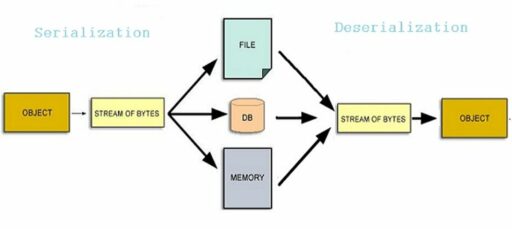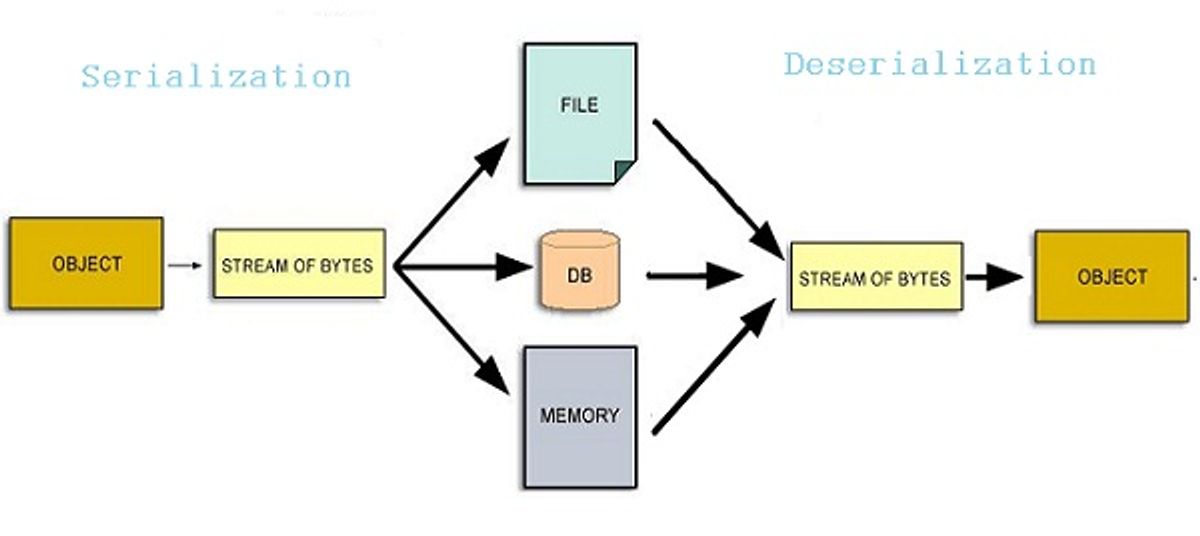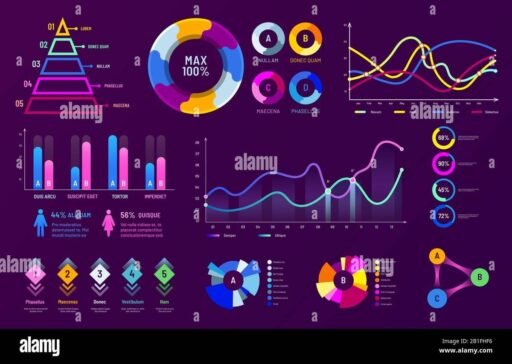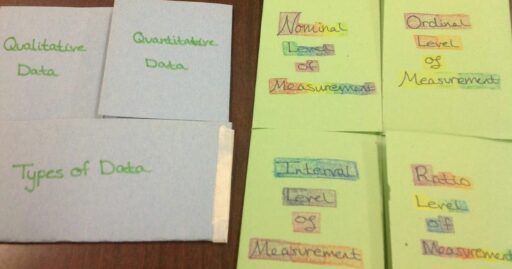Table of Contents
Unlock the Power of Java Data Structures: Your Ultimate Guide to Mastery! This comprehensive guide delves into the world of Java data structures and algorithms, providing clear and concise explanations that cater to both novice and seasoned developers. With a hands-on approach to learning, this guide includes well-explained examples, practical exercises, and insightful interview questions to ensure a deep understanding of the material. It’s an indispensable resource for anyone aiming to elevate their Java programming expertise.
Key Takeaways
- Provides a clear and comprehensive understanding of Java data structures and algorithms, suitable for all levels.
- Employs a practical, hands-on approach with examples and exercises to reinforce learning and application.
- Covers fundamental concepts such as arrays, strings, recursion, and complex data structures like trees and graphs.
- Includes performance analysis, best practices, and a deep dive into Java Collections Framework for efficient coding.
- Offers valuable preparation for coding interviews with problem-solving strategies and complexity analysis.
Fundamentals of Java Data Structures

Understanding Arrays and Strings
Arrays are a foundational data structure in Java, characterized by their ability to store elements in contiguous memory locations. Understanding arrays is essential for mastering the fundamentals of data structures and algorithms. They come in various forms such as one-dimensional, multi-dimensional, dynamic, and sparse arrays, each with unique characteristics and use cases.
When working with arrays, it’s crucial to grasp the operations that can be performed on them. Insertion and deletion, for instance, require maintaining contiguous memory, which can be more complex than in data structures like linked lists. Accessing elements using square brackets [] notation or pointer arithmetic (in languages like C and C++) is straightforward, allowing for efficient data retrieval and manipulation.
Java’s String array is a specific type of array that holds strings. It’s important to know how to declare, initialize, and create String arrays, as well as the conversions that can be carried out on them.
Understanding strings in Java is equally important. Strings are immutable sequences of characters, and Java provides a rich set of operations to work with them. From concatenation to substring extraction, mastering strings is vital for text processing and algorithm implementation.
Exploring Recursion and its Applications
Recursion is a fundamental concept in computer science, where a function calls itself to solve a problem. It is particularly useful in tasks that can be broken down into similar subtasks. Recursion simplifies complex problems by dividing them into more manageable parts. For instance, recursion is the go-to approach for algorithms like calculating factorials and solving the Tower of Hanoi, both of which are based on self-similarity in their solutions.
When comparing recursion to iteration, it’s important to understand their differences and when to use each. Recursion is often more intuitive when the problem naturally fits a recursive pattern, while iteration can be more efficient for simple loops. Here’s a quick comparison:
- Recursion: Elegant for problems with self-similar structure
- Iteration: Better for straightforward looping tasks
Recursion is demystified through practical examples, teaching you when and how to use recursion effectively.
Understanding when to use recursion is crucial for efficient programming. It’s not always the best tool, especially when it comes to memory usage and large input sizes. However, with the right problem, recursion can lead to elegant and simple solutions that are easy to understand and maintain.
Implementing Hash Tables and Linked Lists
Linked Lists are a fundamental data structure, offering dynamic memory allocation and efficient insertion and deletion operations. Understanding their implementation is key to mastering Java data structures. They come in various forms, such as singly, doubly, and circular linked lists, each with its unique advantages.
Hash Tables, on the other hand, provide rapid data access through hashing. They are essential for scenarios requiring quick lookups, and understanding their collision handling mechanisms, like separate chaining and open addressing, is crucial. The course provides a deep dive into hash functions and probing techniques, ensuring you can implement hash tables with confidence.
The course’s practical approach, with quizzes and coding exercises, ensures that you not only learn the theory but also apply it effectively, solidifying your understanding of these data structures.
The table below summarizes the operations and their complexities for both data structures:
| Operation | Linked List Complexity | Hash Table Complexity |
|---|---|---|
| Insertion | O(1) to O(n) | O(1) on average |
| Deletion | O(1) to O(n) | O(1) on average |
| Search | O(n) | O(1) on average |
This foundational knowledge is not only crucial for coding interviews but also for effective problem-solving in real-world applications.
Mastering Stacks, Queues, and Binary Trees
Stacks and queues are fundamental data structures that are widely used in computer science for managing collections of elements in a specific order. Understanding their operations is crucial for algorithm design and problem-solving.
- Stacks follow a Last In, First Out (LIFO) principle, making them ideal for scenarios like undo mechanisms in text editors or call stack management in programming languages.
- Queues operate on a First In, First Out (FIFO) principle, which is essential for tasks such as task scheduling and breadth-first search in tree or graph traversals.
Binary trees, on the other hand, are hierarchical structures that allow for efficient searching, insertion, and deletion operations. They form the basis for more complex tree data structures like Binary Search Trees (BST), AVL Trees, and Heaps.
Mastery of these data structures is not only about theoretical knowledge but also about applying them to solve practical problems effectively.
The binary tree is very important for coding rounds, as it provides a foundation for understanding more advanced tree structures and algorithms. By practicing with targeted interview and LEETCODE exercises, you can sharpen your problem-solving skills and prepare for technical interviews.
Algorithmic Strategies in Java

Sorting Algorithms and Their Efficiencies
Sorting algorithms are fundamental to efficient data processing and retrieval in Java. Understanding the performance characteristics of each sorting method is crucial for optimizing applications. The built-in sorting methods in Java are well-optimized and efficient for a wide range of scenarios, making them a convenient choice in many situations.
When it comes to sorting algorithms, Java developers have a plethora of options:
- Bubble Sort: Simple yet inefficient for large datasets.
- Selection Sort: Slightly better performance than bubble sort but still slow.
- Insertion Sort: Good for small or nearly sorted datasets.
- Merge Sort: Highly efficient, stable, and uses divide and conquer.
- Quick Sort: Fast for large datasets but performance depends on pivot selection.
- Heap Sort: Great for fixed-size data or streaming data.
- Radix Sort: Non-comparative and fast for integers or strings.
Each algorithm’s efficiency is analyzed to give you a clear understanding of its performance. This knowledge is not only academic but also highly practical, as it directly influences the speed and scalability of your Java applications.
By mastering these sorting techniques, you can ensure that your Java applications run smoothly and can handle large volumes of data with ease. The course content is designed to take you from the basics to more advanced sorting algorithms, providing a comprehensive understanding of their implementations and time complexities.
Tree and Graph Traversal Techniques
Mastering tree and graph traversal techniques is crucial for handling complex data structures in Java. Trees are fundamental, with operations like traversal, insertion, and deletion being essential for Binary Search Trees (BST), AVL Trees, and Binary Heaps. Graphs require a different approach, focusing on representation and traversal algorithms such as Breadth First Search (BFS) and Depth First Search (DFS).
In the realm of graphs, mastering traversal techniques is not just about understanding the algorithms, but also about applying them to solve real-world problems like finding the shortest path using Dijkstra’s and Bellman Ford algorithms.
Advanced tree structures such as Threaded Binary Trees and Expression Trees also play a significant role, with their unique insertion and evaluation operations. Similarly, B trees are indispensable for efficiently managing large datasets, with their specialized traversal and modification methods.
Here’s a quick overview of key traversal techniques and their applications:
- Depth-First Search (DFS): Ideal for exploring the full depth of a tree or graph before backtracking.
- Breadth-First Search (BFS): Used to explore the nodes level by level, often in shortest path calculations.
- In-Order Traversal: Commonly used in BSTs to retrieve data in sorted order.
- Pre-Order Traversal: Useful for copying a tree structure.
- Post-Order Traversal: Often used in expression trees to evaluate postfix expressions.
By integrating these techniques into Java applications, developers can tackle a variety of complex problems, from constructing binary trees to designing efficient algorithms for large-scale data processing.
Dynamic Programming and Greedy Algorithms
Dynamic Programming (DP) and Greedy Algorithms are two powerful strategies for solving complex problems in Java. DP optimizes by storing subproblem solutions, ensuring that each is calculated only once, typically using memoization or bottom-up approaches. This technique is particularly effective for problems like the Fibonacci sequence, where overlapping subproblems are common.
Greedy Algorithms, on the other hand, make locally optimal choices at each step, aiming for a global optimum. They are often simpler and faster than their DP counterparts, but may not always lead to the best solution for every problem. For instance, when extracting data from a social network using its API, a greedy strategy could be implemented to reach more users efficiently.
Both strategies require a solid understanding of the problem at hand and a careful analysis of the potential solutions. Mastering these algorithms not only enhances your problem-solving skills but also prepares you for technical interviews and real-world applications.
The table below summarizes some common problems and the appropriate algorithmic strategy:
| Problem Type | Dynamic Programming | Greedy Algorithm |
|---|---|---|
| Optimization | Yes | Sometimes |
| Shortest Path | Yes | Yes |
| Spanning Tree | No | Yes |
| Scheduling | Yes | Yes |
Divide and Conquer Methods
The Divide and Conquer approach is a cornerstone in algorithmic design, particularly in Java where its implementation can lead to efficient and scalable solutions. This strategy involves breaking down a complex problem into smaller, more manageable parts, solving each part independently, and then combining the solutions to form a complete answer.
The beauty of Divide and Conquer lies in its recursive nature, which aligns perfectly with Java’s object-oriented paradigm, allowing for clean and modular code.
Common algorithms that employ this method include Merge Sort, Quick Sort, and Binary Search. Each of these algorithms demonstrates the power of Divide and Conquer through their recursive breakdown of problems:
- Merge Sort: Divides the array into halves, sorts each half, and merges them back together.
- Quick Sort: Selects a ‘pivot’ element, partitions the array around the pivot, and recursively sorts the partitions.
- Binary Search: Repeatedly divides the search interval in half until the target value is found or the interval is empty.
Understanding and mastering these algorithms is crucial for tackling complex computational problems and is often a focus in technical interviews.
Java Collections Framework Deep Dive

Leveraging the Power of Collections
The Java Collections Framework is a pivotal part of Java programming, enabling developers to manage groups of objects with efficiency and ease. Understanding and utilizing the Collections Framework is essential for Java developers to write clean, scalable code.
- ArrayList: Dynamic array implementation, allows for fast iteration and quick access.
- LinkedList: Doubly-linked list implementation, ideal for frequent insertions and deletions.
- HashSet: Implements Set interface, great for unique collections without duplicates.
- HashMap: Key-value pairs, perfect for fast lookups.
The right choice of collection can significantly impact the performance and scalability of an application. It’s crucial to consider factors such as the frequency of operations like insertion, deletion, and access when selecting a collection.
By mastering the Collections Framework, developers can optimize data management and enhance the overall performance of their Java applications. It’s not just about knowing the collections but also about applying them appropriately in different scenarios.
Advanced Data Structures in Collections
The Java Collections Framework is a cornerstone of Java programming, enabling developers to manage groups of objects with efficiency and ease. Advanced data structures within this framework extend beyond the basic collections like ArrayLists and HashMaps, offering sophisticated ways to organize and manipulate data.
For instance, the TreeSet and TreeMap classes implement the NavigableSet and NavigableMap interfaces, respectively, providing sorted collections with powerful querying capabilities. Similarly, the LinkedHashMap preserves insertion order, which can be crucial for certain algorithms.
Here’s a quick overview of some advanced structures and their typical use cases:
TreeSet: Sorted unique elements, useful for maintaining a sorted set.TreeMap: Key-value pairs in natural order, ideal for sorted maps.LinkedHashMap: Key-value pairs with predictable iteration order.PriorityQueue: Elements ordered by priority, often used in scheduling.
Embracing these advanced data structures can significantly optimize performance and lead to more elegant code solutions. Mastery of these tools is essential for tackling complex problems where standard collections fall short.
Performance Analysis of Collection Operations
When working with the Java Collections Framework, it’s crucial to understand the performance implications of various operations. Performance tuning is a critical aspect of application development, and the Collections Framework is no exception. Different collection types offer different performance characteristics for operations such as insertion, deletion, and traversal.
For instance, ArrayLists are excellent for random access due to their underlying array structure, but can be costly when it comes to insertion and deletion in the middle of the list. Conversely, LinkedLists excel at these operations but may lag in random access performance. Below is a table summarizing the average time complexities for common operations across different collection types:
| Collection Type | Access | Insertion | Deletion | Traversal |
|---|---|---|---|---|
| ArrayList | O(1) | O(n) | O(n) | O(n) |
| LinkedList | O(n) | O(1) | O(1) | O(n) |
| HashSet | O(1) | O(1) | O(1) | O(n) |
| TreeSet | O(logn) | O(logn) | O(logn) | O(n) |
It’s important to note that these complexities are average cases and actual performance can vary based on factors such as collection size and the state of the collection (e.g., a HashMap with a high load factor).
Choosing the right collection type for a specific use case can significantly impact the efficiency of your Java application. Always consider the operation frequencies and collection sizes when making your decision.
Best Practices for Using Collections in Java
When working with the Java Collections Framework, it’s crucial to understand the nuances of each collection type to manage data effectively. Selecting the appropriate collection for a given task can significantly impact the performance and readability of your Java applications. For instance, prefer ArrayList over LinkedList for frequent random access, but choose LinkedList when frequent insertions and deletions are involved.
Here are some best practices to keep in mind:
- Use
EnumSetorEnumMapfor collections of enum keys for better performance. - Employ
Collections.unmodifiableListand similar methods to create read-only views. - Consider
ConcurrentHashMapfor thread-safe operations without the need for explicit synchronization.
Remember, the choice of collection should be driven by the specific needs of your application, such as ordering requirements, key-value associations, or concurrency considerations.
Understanding the complexities of each collection type and their operations is essential. This knowledge enables developers to write more efficient and maintainable code, leveraging the full power of the Java Collections Framework.
Practical Problem-Solving with Java

Applying Data Structures to Solve LeetCode Problems
LeetCode exercises are an excellent way to apply the data structures and algorithms you’ve learned in Java. These challenges test your knowledge and prepare you for technical interviews, with problems ranging from array manipulation to validating binary search trees (BSTs) and optimizing solutions. The practice you gain from solving these problems is invaluable, especially for those aiming for interviews at top tech companies.
When approaching LeetCode problems, it’s crucial to understand the problem statement and identify the appropriate data structure to use. Here’s a simple guide to get you started:
- Understand the problem: Read the problem carefully and make sure you understand the requirements.
- Choose the right data structure: Based on the problem, decide which data structure would offer the most efficient solution.
- Implement the solution: Write your code in Java, keeping in mind best practices and efficiency.
- Test your code: Run your code against various test cases to ensure correctness and performance.
Remember, the key to mastering LeetCode problems is consistent practice and analysis of your solutions. Reflect on the time and space complexity of your code and strive to optimize it.
Courses like ‘Java Data Structures & Algorithms + LEETCODE Exercises‘ on platforms like Udemy provide structured learning paths complemented by practical LeetCode problems. This integrated approach helps solidify your understanding of data structures, such as linked lists, stacks, queues, and binary trees, and their applications in solving complex problems.
Design Patterns for Efficient Algorithms
Efficient algorithms are the backbone of any high-performance application. Mastering design patterns is a key aspect of writing robust and maintainable code. By leveraging common design patterns, developers can solve recurring problems in a standard, tested way, reducing the likelihood of introducing bugs.
- Singleton Pattern: Ensures a class has only one instance and provides a global point of access to it.
- Observer Pattern: Allows a subject to notify an observer object of any state changes without knowing its details.
- Factory Method: Defines an interface for creating an object, but lets subclasses alter the type of objects that will be created.
- Strategy Pattern: Defines a family of algorithms, encapsulates each one, and makes them interchangeable.
Emphasizing the importance of design patterns, this guide not only explores Java’s top 10 design patterns for efficient and scalable software development but also provides a structured approach to problem-solving. The patterns discussed here are instrumental in tackling complex programming challenges and are a testament to the power of well-architected software solutions.
Understanding and applying these patterns can significantly enhance the quality of your code and your ability to debug and extend it. The table below summarizes some of the most popular design patterns and their typical use cases in Java development.
Time and Space Complexity Analysis
Understanding the time and space complexities of data structure operations is crucial for writing efficient Java programs. Complexity analysis helps in predicting how the program will scale with the size of the input data.
For example, consider the complexities associated with array operations. Insertions and deletions at the end of an array typically have a time complexity of O(1), while those at the beginning or middle may require shifting elements, resulting in a time complexity of O(n).
In the realm of searching algorithms, linear search exhibits a time complexity of O(n), as it potentially scans each element. In contrast, binary search boasts a time complexity of O(log n), showcasing its efficiency in larger datasets.
When evaluating data structures, it’s also essential to consider space complexity. For instance, linked lists have different space requirements compared to arrays, which can influence the choice of data structure based on the constraints of a problem.
Interview Preparation and Coding Challenges
Preparing for coding interviews requires a strategic approach that combines theoretical knowledge with practical application. Mastering data structures and algorithms is crucial, as they form the backbone of coding challenges posed by top tech companies. To become proficient, one must delve into the various data structures like arrays, stacks, and trees, and understand algorithms like sorting and searching.
A well-structured course or guide can provide a roadmap to success. It starts with the fundamentals of Data Structure and Algorithms (DSA), teaching you about time and space complexity to optimize your code efficiently. Practical coding exercises and projects complement the theoretical knowledge, allowing you to apply what you’ve learned in real-world scenarios.
By the end, you’ll be well-equipped to face any coding challenge, making you a strong candidate for MAANG coding interviews.
For those aiming to ace tech interviews, the course includes sections dedicated to interview preparation. You’ll practice with problems from companies like Amazon, Facebook, and Microsoft, preparing you for the challenges of a tech career. These sections also include targeted interview and LEETCODE exercises, sharpening your problem-solving skills.
Advanced Topics and Real-World Applications

Concurrency and Multithreading with Data Structures
In the realm of Java programming, concurrency and multithreading are pivotal for enhancing application performance and responsiveness. By leveraging data structures in a multithreaded environment, developers can achieve significant improvements in execution time and resource management.
- Understanding the synchronization of data structures is essential to prevent race conditions and ensure thread safety.
- Employing concurrent collections from the Java Collections Framework can lead to more efficient data handling in a multithreaded context.
- Designing custom data structures may require careful consideration of locking mechanisms and atomic operations to maintain data integrity.
Embracing these concepts not only boosts application efficiency but also prepares developers for complex coding interviews and real-world problem-solving. Mastery of these techniques is a testament to a developer’s proficiency in both the theoretical and practical aspects of Java programming.
Designing Custom Data Structures for Specific Problems
When tackling unique challenges in software development, sometimes the standard data structures don’t quite fit the bill. Designing custom data structures becomes essential to optimize performance and manage data effectively. Tailoring a data structure to a specific problem can significantly reduce complexity and enhance efficiency.
- Identify the problem’s requirements
- Analyze the data and operations needed
- Design the structure for optimal data access and manipulation
- Implement the custom data structure in Java
- Test and refine the structure for robustness
By carefully considering the problem at hand and the operations required, developers can craft data structures that are not only efficient but also intuitive to use. This process often involves iterating over the design, ensuring that the data structure is well-suited to the problem’s nuances. The goal is to create a data structure that provides the best possible performance while remaining maintainable and scalable.
Case Studies: Real-World Java Data Structure Implementations
In the realm of software development, the practical application of data structures and algorithms is as crucial as their theoretical understanding. Real-world case studies illustrate the tangible benefits of well-chosen data structures in Java. For instance, consider the optimization of search operations in large-scale systems, where the implementation of efficient hash tables can drastically reduce lookup times.
By examining these case studies, developers gain insights into the nuances of data structure selection and the impact of algorithmic choices on performance and scalability.
The following table highlights a few scenarios where specific data structures have been pivotal in enhancing system performance:
| Scenario | Data Structure | Benefit |
|---|---|---|
| Large-scale user authentication | Hash Table | Fast retrieval of user credentials |
| Real-time stock market analysis | Binary Trees | Efficient sorting and searching |
| Social network connectivity | Graphs | Effective representation of user connections |
These examples underscore the importance of mastering data structures and algorithms to solve complex problems efficiently. As Java continues to be a language of choice for many enterprise applications, the knowledge of its data structures becomes indispensable for developers aiming to excel in their careers.
Future Trends in Data Structures and Algorithms
As we look to the future of data structures and algorithms, we can anticipate a continued evolution shaped by the challenges of big data, machine learning, and the increasing need for efficient real-time processing. The integration of artificial intelligence to optimize algorithmic performance is poised to become a significant trend.
- Quantum computing is set to revolutionize the way we approach complex problems, potentially leading to the development of new data structures.
- The rise of edge computing demands data structures that can operate effectively in decentralized environments.
- Persistent data structures are gaining traction for their ability to maintain previous versions of data, which is crucial for undo functionality in software applications.
Embracing these trends will require a deep understanding of both classic principles and innovative techniques. Staying abreast of the latest developments will be key for developers and researchers aiming to push the boundaries of what’s possible with data structures and algorithms.
Conclusion
In conclusion, mastering data structures and algorithms in Java is an essential step for any programmer looking to enhance their coding proficiency and problem-solving skills. This comprehensive guide has provided a deep dive into the core concepts, practical implementations, and performance considerations of various data structures and algorithms. With the knowledge gained from this guide, readers are well-equipped to tackle complex programming challenges, ace technical interviews, and contribute to projects with efficiency and confidence. Remember, the journey to mastery is ongoing, and continued practice and exploration of Java’s capabilities will only further solidify your expertise. Happy coding!
Frequently Asked Questions
What makes ‘Data Structures in Java’ stand out from other programming books?
The book stands out due to its hands-on approach, clear and concise explanations, practical exercises, and step-by-step algorithms with clean working code. It also includes valuable interview questions with solutions, making it accessible to both beginners and experienced programmers.
Can ‘Data Structures in Java’ help with interview preparation?
Yes, the book is particularly valuable for interview preparation as it includes a section dedicated to interview questions and solutions, providing practical insights into problem-solving with data structures and algorithms.
Is the book suitable for beginners or only for experienced Java programmers?
The book is written in an accessible manner, making it suitable for both beginners who are new to data structures and algorithms, and experienced Java programmers looking to deepen their understanding.
Does ‘Data Structures in Java’ cover practical problem-solving?
Yes, the book covers practical problem-solving by presenting various techniques and their implementations in Java, complemented by LeetCode problems to solidify understanding and practical data structures and algorithms exercises.
How does the book help in understanding the complexities of data structures?
The authors discuss the time and space complexities of different operations in detail, empowering readers to make informed decisions when designing and implementing solutions.
What topics are covered in the Java Collections Framework section of the book?
The Java Collections Framework section includes a deep dive into leveraging collections, advanced data structures within collections, performance analysis of collection operations, and best practices for using collections in Java.





